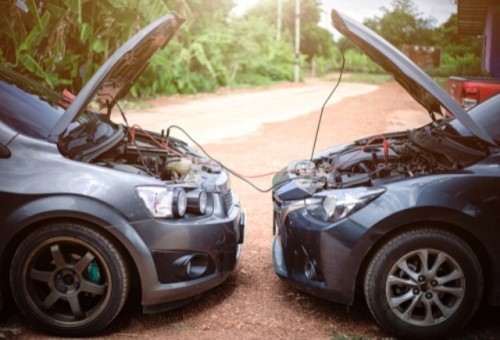
When it comes to no-start conditions on diesel engines, many petrol mechanics seem to take the view that "Well, it’s a diesel, so anything is possible". However, while it is true that modern diesel engine and fuel management systems are several orders of magnitude more complex than they were just 10 or 15 years ago, these systems are not so complex that at least some no-start conditions cannot be diagnosed and resolved relatively easily. In fact, diesel engines have the advantage that they do not have electrical ignition systems, which reduces the possible causes of no-start conditions significantly, as compared to the possible causes of no-start conditions on petrol engines. Thus, in this article, we will discuss some common causes of no-start conditions on diesel engines and provide some diagnostic tips and tricks to enable non-diesel technicians to resolve no-start conditions on diesel engines relatively easily. Let us start with this question-
There once was a time when run-down batteries and defective glow plugs accounted for the vast majority of no-start conditions, and while these issues still feature strongly today, several new technologies are now contributing their fair share of causes of no-start conditions on diesel engines. Moreover, the implementation of some technologies, such as for instance, common rail fuel injection and SCR exhaust after treatments has now reached levels of complexity that rival those of similar systems on petrol engines.
Nonetheless, despite their complexity, modern diesel engines and their control systems still work on the cause and effect principle; for something to happen, something else must happen first, and if both things happen in the correct order, the engine will usually start and run. This is also true of petrol engines, but in the case of diesel engines, some things, such as for instance, fuel quality and the capacity/condition of the battery, are more important on diesel engines than they are on petrol engines.
Thus, given the fact that some possible defects/shortcomings/operating parameters are more important than others when it comes to no-start conditions on diesel engines, it helps to know what needs to happen first (before something else happens) for a diesel engine to start. It also helps to know and understand why some diagnostic procedures are required to diagnose diesel no-start conditions, so let us look at some common causes of no-start conditions and how to resolve them, starting with-
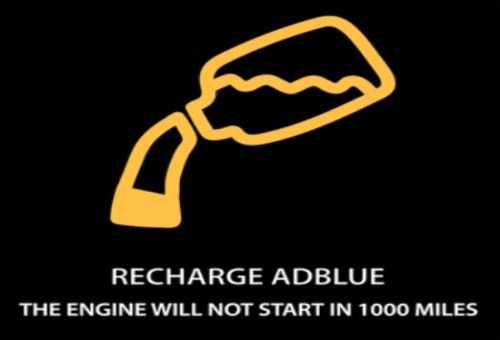
Newer diesel vehicles are typically fitted with DPF (Diesel Particulate Filter) devices, whose function it is to trap and hold onto diesel soot until they can be burned off in a DPF regeneration procedure. While some vehicles use fuel injection timing strategies to increase the exhaust gas temperature to the point where the regeneration process occurs automatically, some vehicles inject a liquid reductant known as AdBlue or DEF (Diesel Exhaust Fluid) into the DPF to initiate the regeneration process.
We need not delve into complexities of SCR exhaust after-treatment systems here, but suffice to say that the frequency of DPF regeneration events depends on-
It must also be stated that while most vehicles can operate without AdBlue for long periods, current emissions regulations require that liquid reductant systems be in perfect working order and if they are not, that the vehicle's ECU enforces a no-start condition until the problem is resolved.
However, there are three problems with this approach or requirement. The first is that-
These issues are sometimes interconnected or closely related, and even experienced diesel techs sometimes have some difficulty separating cause from effect, so how do you know where to begin diagnosing the actual cause of the no-start condition?
Of course, the cause might not even be related to AdBlue or DPF issues, but here is a quick rundown of the most important things to check when you encounter a no-start condition on a diesel engine, starting with suspected-
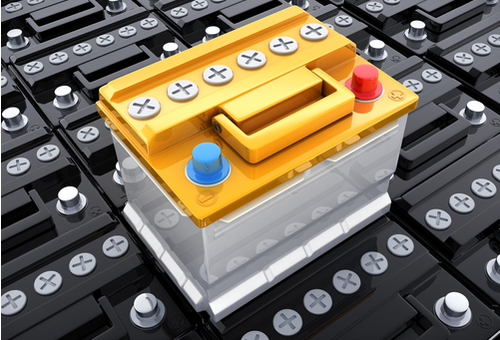
One of the most interesting things about modern diesel vehicles is the fact that their batteries do not have to be conspicuously run down to cause a no-start condition. In fact, most OEM diagnostic flow charts clearly state that he battery (or both batteries on some vehicles), must be charged to “at least 12 volts” before any diagnostic procedures for no-start conditions are attempted.
In the case of modern diesel engines, "at least 12 volts" is not the same as "almost 12 volts", and even partially discharged batteries that still read 12 volts can be problematic, so make doubly sure that all the LSI batteries on the vehicle are charged to specification before you do anything else. However, you also need to make sure there are no parasitic drains on the batteries, and that no aftermarket accessories are present that have the potential to drain the batteries through a linked circuit to the-
If you are certain there are no parasitic drains present and that the batteries are charged to their correct specifications, perform a thorough test of the entire charging system to verify that the system is fully functional. Bear in mind that as on petrol vehicles, not all charging system faults set fault codes or illuminate warning lights, so be sure the charging system works before you continue checking for-
The most common electrical issues that can cause no-start conditions on diesel engines (after weak batteries and defective glow plugs or defective glow plug control modules), are in the order of their prevalence, the following-
Poor ground connections
This is a common issue between the battery and the engine, between the engine and the body, and between the body and the battery. Modern diesel engines draw vastly greater amounts of amps during cranking than petrol vehicles do, and therefore, it does not take much for a ground connection on a diesel vehicle to lose its integrity. Typical signs of poor ground connections include discolouration of the ground cables' insulation or actual melting of insulation near ground cable terminations. Bear in mind that once a ground cable has overheated, best practices dictate that the cable be replaced.
Excessive voltage drops to fuel lift pumps
Many modern diesel vehicles use a pulse width modulated signal to control and/or regulate the volume of fuel a lift pump delivers to the high-pressure injection pump. Therefore, since this power supply is variable, measured voltage drops must be compared to reliable service information to verify that the fuel lift pump is not being starved of power. Reliable service information can be accessed here, or here, but note that both portals require registration and payment of nominal fees to access information. Alternatively, service information can often be obtained by joining and participating in technical discussion forums such as http://www.iatn.net/, or mechanic.com.au.
Defective “Water In Fuel” sensors
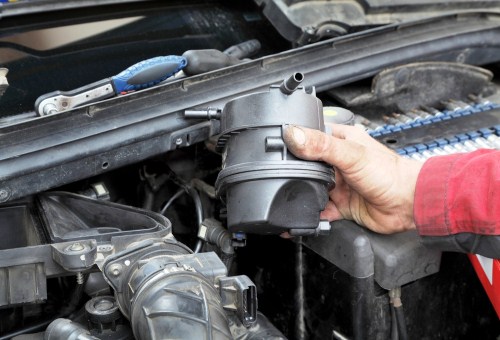
The quality and purity of Australian diesel fuel leave much to be desired, but the same can be said of the accuracy of sensors whose function it is to detect excessive amounts of water in diesel fuel- regardless of the fuel’s origin.
Excessive amounts of water in diesel fuel will usually trigger a warning light on the dashboard, but not all ECU's can distinguish a faulty water detector from fuel that is indeed contaminated with water. Moreover, many defective water detectors will not set a trouble code, which means that you have to do a physical inspection of all water traps on the vehicle when a warning about water-contaminated fuel is present. However, depending on the type of failure in the water detection system a warning on the dashboard might not be present, so check for the presence of water in fuel as a matter of course when you are diagnosing a no-start condition on a modern diesel engine.
Transmission range switch
While safety lockout switches on automatic transmissions are fairly reliable, the problem with many diesel vehicles with automatic transmissions is that they are often used in the off-road environment, and it is not uncommon for these vehicles to accumulate a lot of mud, sand, and other types of crud on and/or around their transmissions.
One result of this is that wet mud can cause short circuits in the lockout switch, which means that the vehicle could either be started in any gear, or not be started at all. Therefore, if wiggling the gear selector does not work, you might have to inspect the transmission lockout switch, and remove all accumulated mud and dirt from it. Note though that in some cases; in fact, in the majority of cases, the wiser option is to replace the lockout switch with an OEM part to ensure proper future operation of the switch.
There are of course many other possible electrical causes of no-start conditions on diesel vehicles, and for the most part, these are similar in nature to electrical issues on petrol vehicles. Issues like burnt, shorted, corroded, and disconnected wiring and/or connectors are as common on diesel vehicles as they are on petrol vehicles, and finding these kinds of problems may require extensive testing and/or dismantling of wiring harnesses.
Nonetheless, one other major non-electrical cause of no-start conditions on diesel vehicles involves the mechanical aspects of the fuel system, so let us look at some-
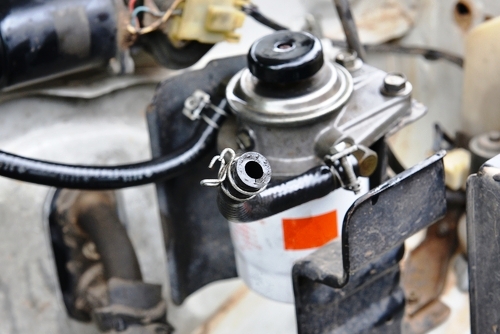
Modern common rail diesel injection systems typically operate at injection pressures of about 2000 bar, and sometimes more, but to do this reliably over extended periods, the injection system needs to be fed with clean and uncontaminated fuel.
We need not delve into the complexities of pressure control on modern common rail diesel injection systems here, but suffice to say that since Australian diesel is among the dirtiest available fuel in the world, modern common rail injection systems have a higher failure rate in Australia than almost anywhere else in the world. Let’s look at some of the reasons for this, starting with-
Blocked fuel filters
Although many OEM and some high-quality aftermarket fuel filters have efficiency ratings above 80% and can remove solid contaminants with diameters as small as 4 microns, the problem with these filters is that they can get clogged up relatively quickly by high contaminant loads in dirty fuel. Therefore, to monitor filter efficiencies, most modern diesel vehicles use a series of sensors that monitor pressure differences across the filter- the pressure difference being an indicator of the flow rate (of fuel through the filter), and therefore, the condition of the fuel filter.
However, these sensors can and do fail fairly regularly, and when they do, they typically produce a no-start condition without necessarily setting trouble codes, but when clogged filters do produce codes, they will almost certainly produce one or more low fuel pressure codes. However, resist the temptation to strip down the fuel system to look for the cause of the low fuel pressure; start your diagnostic process by replacing the fuel filter.
Damaged injectors
While damaged fuel injectors do not typically produce no-start conditions (unless all the injectors have been totally destroyed, which almost never happens), damaged injectors affect combustion, which in turn, affects both the operation and longevity of both catalytic converters and DPF devices. Some possible results include more frequent DPF regeneration requests, reduced catalytic converter efficiencies, and ultimately, a no-start condition because either or both the DPF and catalytic converters have been severely damaged.
Note that operating clearances in modern diesel injectors are around 4 microns and since most aftermarket diesel filters are only about 80% effective in trapping solid particles, many 4-micron and sometimes, larger solid particles pass through most aftermarket diesel filters to become lodged in injectors. The result of this is that a), solid particles block injection orifices to disrupt the spray pattern, or b), abrade injectors’ internal surfaces as they pass through the injectors, typically causing them to leak during “OFF” times. Either way, solid particles that pass through diesel filters can damage injectors to the point where a no-start condition is eventually produced as a secondary result, which leaves us with this-
We hope that this article has both given you some new insights into how at least some no-start conditions arise on diesel vehicles, and persuaded you that that an "Anything is possible" mindset is not a reasonable approach to diagnosing and resolving these issues. The fact is that once you have a basic working knowledge of how modern diesel engines work and understand the reason(s) why some diagnostic procedures are required, there is no reason why any reasonably competent petrol technician should not be able to diagnose and resolve the most commonly occurring no-start conditions on the majority of modern diesel vehicles.